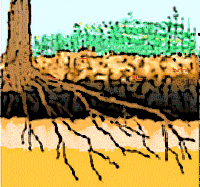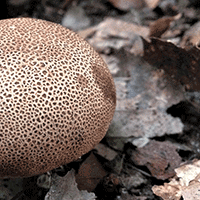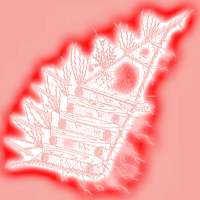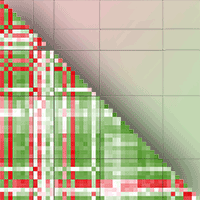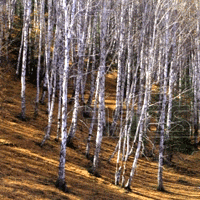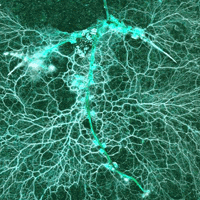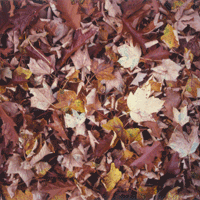
Effect of size and surrounding forest vegetation on chemical properties of soil in forest gaps
Mehmet Özcan (1) , Ferhat Gökbulak (2)
iForest - Biogeosciences and Forestry, Volume 8, Issue 1, Pages 67-72 (2015)
doi: https://doi.org/10.3832/ifor0940-007
Published: Jun 04, 2014 - Copyright © 2015 SISEF
Research Articles
Abstract
Forest gaps have different microclimatic conditions as compared to the surrounding areas, depending on gap size and surrounding forest types and affecting the biological, chemical, physical, and hydrological processes in the forest openings. The objective of this study was to determine the effect of forest gap size and surrounding forest cover type (beech or mixed stands) on the soil of forest opening by analyzing several soil chemical soil properties (pH, electrical conductivity - EC, organic matter - OM, and nutrient content). The study was conducted in the Yuvacik watershed in Izmit (Turkey) and a total of 31 forest gaps of different size (1.44-37.33 ha) and elevations (848-1169 m a.s.l.) were studied. Gaps were divided into three groups with size 0-5 ha, 5-15 ha, and >15 ha. Results showed that forest gap size significantly affected all the investigated chemical properties of the soil, except for soil pH. As gap size increased, sodium (Na+) concentration in the soil decreased from 22.72 to 19.57 mg L-1 while potassium (K+) and magnesium (Mg+2) concentrations increased from 83.88 to 134.62 mg L-1 and from 59.46 to 123.96 mg L-1, respectively. Medium-sized gap soils had the lowest OM content, as well as the lowest calcium (Ca+2) and nitrogen (N+3) concentrations. Surrounding forest types significantly influenced soil chemical properties in the openings, except for EC, N+3, and phosphorus (P-PO4-3). Soils in the gaps surrounded by mixed forest had significantly lower pH but higher OM content, K+, Na+, Ca+2, and Mg+2 concentrations than soils in beech forest gaps.
Keywords
Forest Openings, Forest Ranges, Plant Nutrients, Soil Chemistry, Forest Soils
Authors’ Info
Authors’ address
Faculty of Forestry, Department of Watershed Management, Düzce University, 81620 Düzce (Turkey)
Faculty of Forestry, Department of Watershed Management, Istanbul University, 34473 Bahçeköy, Istanbul (Turkey)
Corresponding author
Paper Info
Citation
Özcan M, Gökbulak F (2015). Effect of size and surrounding forest vegetation on chemical properties of soil in forest gaps. iForest 8: 67-72. - doi: 10.3832/ifor0940-007
Academic Editor
Giustino Tonon
Paper history
Received: Dec 20, 2012
Accepted: Feb 15, 2014
First online: Jun 04, 2014
Publication Date: Feb 02, 2015
Publication Time: 3.63 months
Copyright Information
© SISEF - The Italian Society of Silviculture and Forest Ecology 2015
Open Access
This article is distributed under the terms of the Creative Commons Attribution-Non Commercial 4.0 International (https://creativecommons.org/licenses/by-nc/4.0/), which permits unrestricted use, distribution, and reproduction in any medium, provided you give appropriate credit to the original author(s) and the source, provide a link to the Creative Commons license, and indicate if changes were made.
Web Metrics
Breakdown by View Type
Article Usage
Total Article Views: 54709
(from publication date up to now)
Breakdown by View Type
HTML Page Views: 45989
Abstract Page Views: 3096
PDF Downloads: 4389
Citation/Reference Downloads: 20
XML Downloads: 1215
Web Metrics
Days since publication: 4219
Overall contacts: 54709
Avg. contacts per week: 90.77
Citation Metrics
Article Citations
Article citations are based on data periodically collected from the Clarivate Web of Science web site
(last update: Mar 2025)
Total number of cites (since 2015): 8
Average cites per year: 0.73
Publication Metrics
by Dimensions ©
Articles citing this article
List of the papers citing this article based on CrossRef Cited-by.
References
Standard methods for the examination of water and wastewater (14th edn). American Public Health Association-American Water Works Association-Water Pollution Control Federation, Washington, DC, USA, pp. 1193.
Gscholar
A vegetation survey in forest range of Küredagi-Bala. Ankara University Faculty of Agriculture, Journal of Agricultural Science 4: 62-69. [in Turkish with English abstract]
Gscholar
Range vegetation characteristics and their variation in relation with some soil properties and topographic factors in Isparta region. PhD thesis, Süleyman Demirel University, Institute of Science, Isparta, Turkey, pp. 164. [In Turkish with English abstract]
Gscholar
Determination of vegetation and forage quality in forest gap rangelands of Sarikamis. Master thesis, Atatürk University, Institute of Science, Erzurum, Turkey, pp. 67. [in Turkish with English abstract]
Gscholar
Soil properties in forest gaps and under canopy in broad-leaved Pinus koraiensis forests in Changbai Mountainous Region China. Frontiers of Forestry in China 2 (1): 60-65.
Gscholar
Soil moisture and temperature responses to tree thinning in central New Mexico. In: Proceedings of the “62nd Society for Range Management Annual Meeting”. Albuquerque (New Mexico, USA) 8-12 February 2009. Society for Range Management, Albuquerque, New Mexico, USA, pp. 06-3.
Gscholar
Soil chemical analysis. Prentice Hall Inc., Englewood Cliffs, NJ, USA, pp. 521.
Gscholar
The effects of gap disturbance on soil chemical and biochemical properties in a mixed beech-hornbeam forest of Iran. Ecologica Balkanica 2:39-56.
Gscholar
Seminar on the foundation principles of forest soil laboratories and laboratory techniques. Eskisehir (Turkey) 4-8 April 1994. Eskisehir Forest Soil Laboratory Directorate, Eskisehir, Turkey, pp. 216. [in Turkish]
Gscholar
Range vegetation characteristics of sub-alpine forest range in Yuvacik watershed, Izmit. PhD thesis, Istanbul University, Institute of Science, Istanbul, Turkey, pp. 160. [In Turkish with English abstract]
Gscholar
Meteorology and climatology. Istanbul University publication number no. 4196, Faculty of Forestry publication number no. 460, Dilek offset matbaacilik, Istanbul, Turkey, pp. 369. [In Turkish]
Gscholar
Soil testing and plant analysis (Mitchell CC, Everest JW eds). Southern Regional Fact Sheet, Dept. Agronomy & Soils, Auburn University, AL, USA.
Gscholar
Effect of topography on the botanical composition and yield in forest rangelands. In: Proceedings of the “2nd Congress on Pasture-rangeland and forage plants”. Ege University (Izmir, Turkey) 28-31 May 1991,pp. 139-149. [In Turkish]
Gscholar
Quantitative botanical analyses of range vegetation in the vicinity of Kirklareli and some site factors affecting its composition. PhD thesis, Istanbul University, Faculty of Forestry, Istanbul, Turkey, pp. 132. [in Turkish with English abstract]
Gscholar
Biostatistical analysis (3rd edn). Prentice Hall, Upper Saddle River, New Jersey, USA, pp. 662.
Gscholar


